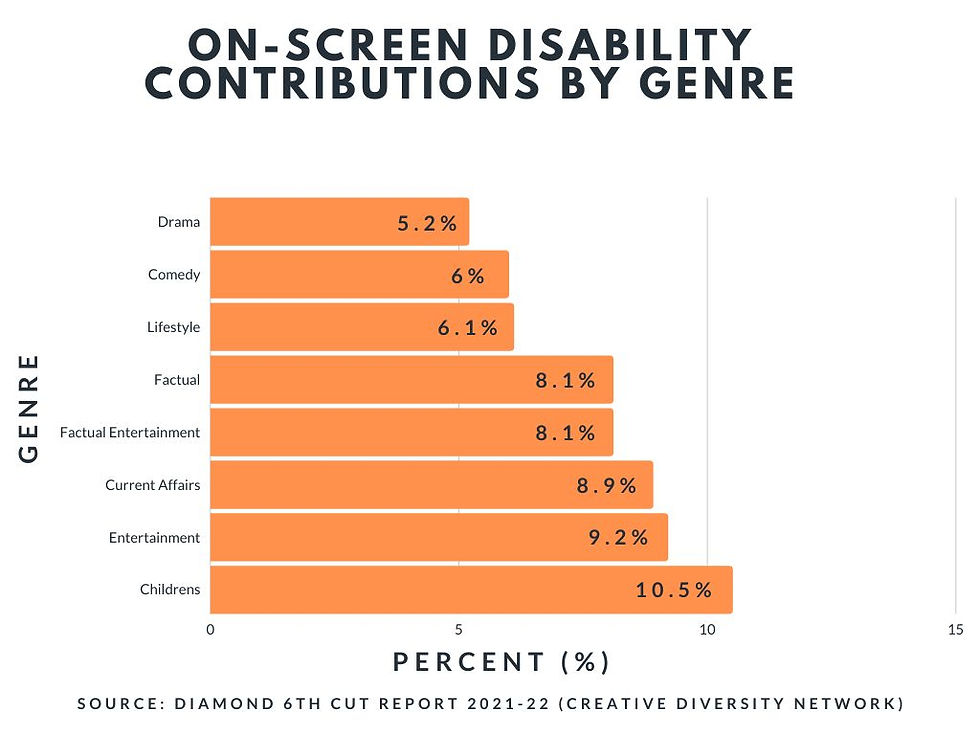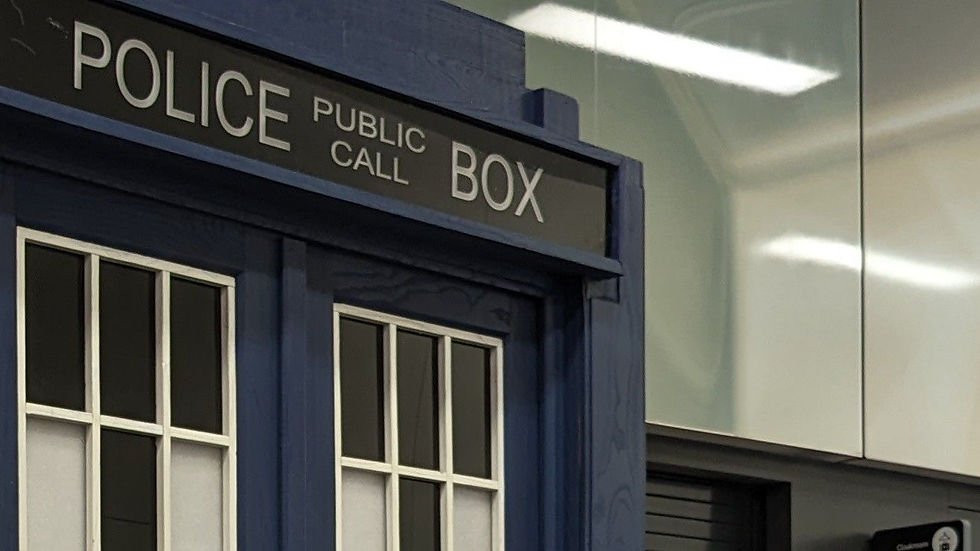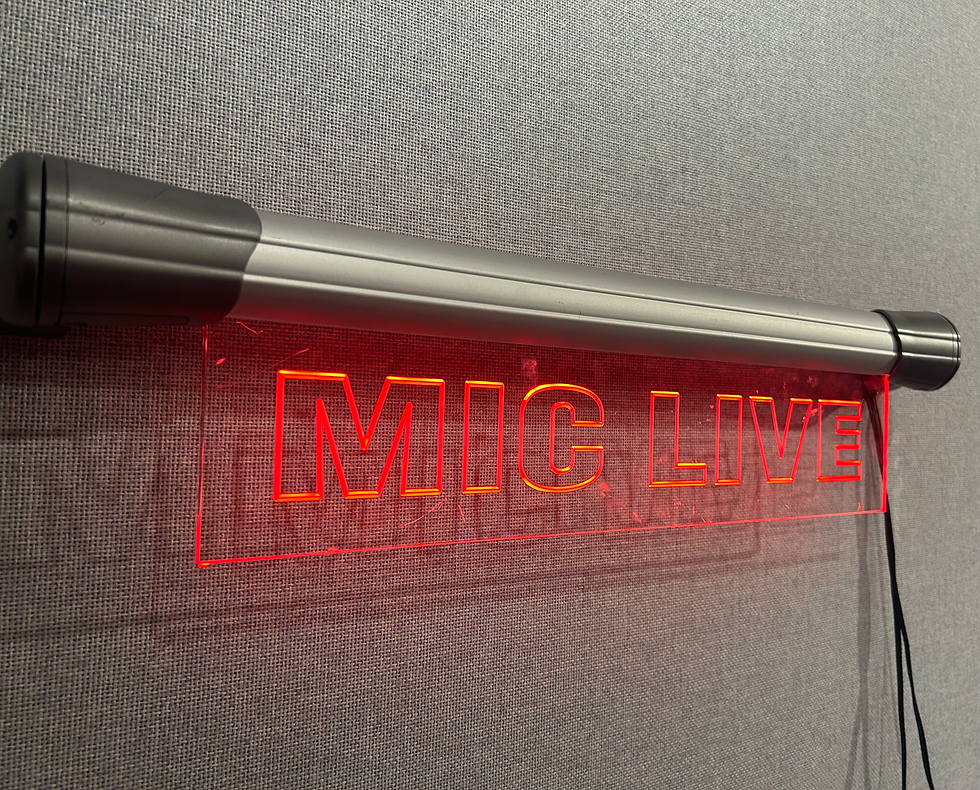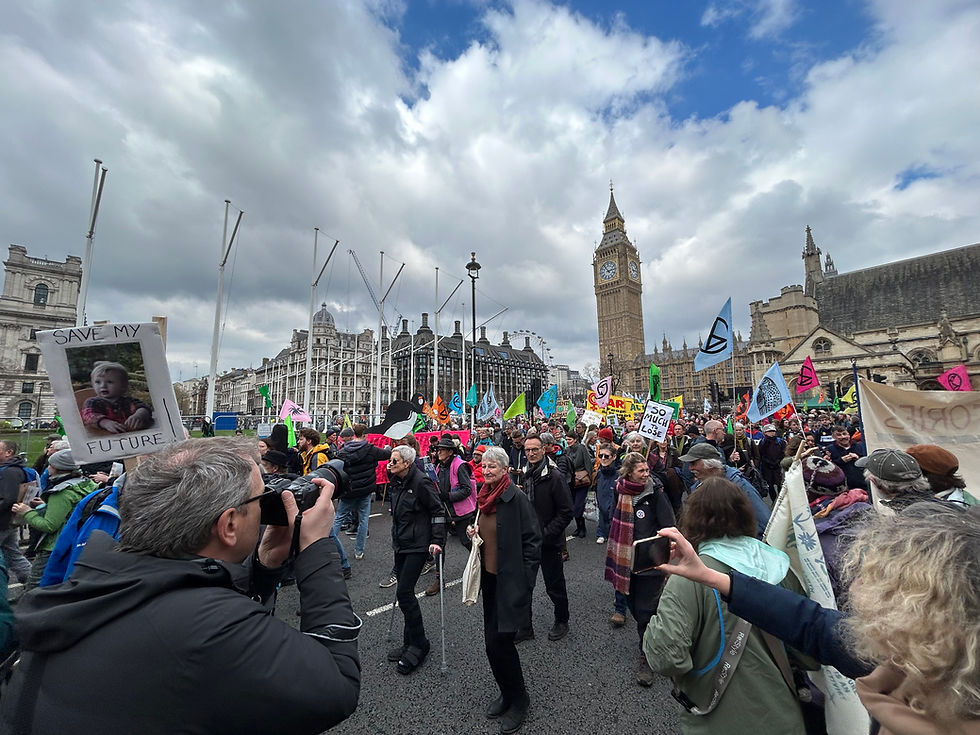Broadcasters “talk a good game” but disabled people remain severely underrepresented on TV
- joebunker
- Dec 4, 2023
- 6 min read
Updated: Jun 2, 2025
Disabled people remain severely underrepresented on British TV and ‘change is slow’, according to a recent report.

Recent data from the Creative Diversity Network shows that 8.2 percent of on-screen contributions were made by people with disabilities during 2021-22, despite them making up 24 percent of the country’s population.
In contrast, on-screen representation of black, Asian and minority ethnic people, who make up 16 percent of the UK’s population, is strong, with a total of 22.9% of on-screen contributions.
And behind these figures are real people trying to break into TV, such as a disabled presenter from Bristol, who believes broadcasters “talk a good game” but are not giving disabled people “a chance.”
“Don’t be quick to turn your back”
Ashely Jenkins has quadriplegic cerebral palsy and got his broadcasting break back in 2017 after appearing on a Bristol community radio show as a guest.
Just 4 weeks after appearing on the sports show, the producer was so impressed with the 33-year-old that he offered Ashley a role as co-presenter.
He’s since been featured on the BBC, and regularly presents a dedicated disability sports show on community TV.
Despite some of his early broadcasting success, Ashley still believes broadcasters are not giving disabled people a fair chance.

“I’m trying to get things commissioned on TV but I keep coming up against challenges”.
He continued, “no one said it would be easy but I feel like everyone is talking a good game but when it comes down to it, no-one wants to commit and commission anything new.
“I’m particularly disappointed with Channel 4 because their ethos is pretty much diversity and inclusion.
“I went to talk to the commissioners and bearing in mind this was a week after the commissioning editor came out and said we are going to commission new content for Channel 4 with new people.
“But I was met with the same old story; we like what you are doing but we don’t have any money basically.
“If you don’t give anyone new a chance then how is the audience going to get to know anyone new – don’t be quick to turn your back.”
Channel 4 has been approached for comment but are yet to respond.
Drama remains the least represented genre
One genre where on-screen representation remains the lowest is Drama with just 5.2 percent of contributions being made by someone disabled.

Meanwhile Children’s TV is the best represented at 10.5 percent.
Ashley believes representation of disability across all genres is key so there is a “true reflection of everyday life”.
But there is another “big issue” facing disabled people trying to break into the media and Ashley believes it’s perhaps one of the biggest barriers of all.
“If you’re on benefits and have got a care package like I have, you can’t be seen to be working or your benefits and money for your care completely goes.
“My care is worth 120k a year and what stable job is going to give me that amount of money?
“It’s not just me covering my care…I need to cover everyone that works for me”.
He continued, “don’t get me wrong I consider myself lucky because I got given my own house by the government and I got a good stable start but when it comes down to it I can’t be seen to be earning any amount of money.”
According to the Department for Work and Pensions, if you are claiming Employment and Support Allowance (ESA), you can earn no more than £167 a week, after tax and National Insurance has been taken off to keep your support.
BBC’s first blind TV director
Damon Rose is thought to have been the BBC’s first ever blind TV director and it caused quite a stir when word got out. ‘BBC hires blind TV director’ read The Sun’s headline back in 1998.
Now Damon is an editor for BBC News, as well as working on the BBC’s ‘Access All’ podcast, which is dedicated to disability news and mental health.
He explained some of the reasons why disabled people have been underrepresented on TV for so long.

“The number one reason has to be accessibility. For example, in the 90’s a news set of a particular news channel had stairs on it so that meant you could never have a disabled guest which meant disability was not part of the news.
“That changed and shaped who was being booked and had a massive impact on whose stories were being told”, he said.
“You’ve also got cultural impact – disabled people are not putting themselves forward often because they see media as the beautiful people and people that look different like me haven’t been included before.
“You’ve got to see it to be it, so if you don’t see disabled people on screen then you don’t apply for the jobs.
“Then there’s out and out discrimination and not understanding from employees”, he added.
“I mean it’s not just the media that doesn’t employ disabled people, the employment gap is huge all around the country and that’s because there is this general idea that disabled people don’t work as productively as other people.”
In fact, data from the government shows that the disability employment rate was only 52.6 percent in July to September 2022, compared to 82.5 percent for non-disabled people.
“As a blind person I know that I’ve been to job interviews where the first question is how are you going to get to work in the morning.
“There’s some really basic misunderstandings about disability and residual prejudice that has there for a long time and still remains.”
“Horrible on the outside, horrible on the inside”
The ‘disabled villain’ trope has been widely criticised by disability rights campaigners and charities.
It’s felt writers too often make the villain of the story someone that has a disability or looks different, such as having a facial disfigurement to make that person look more frightening and intimidating.
Damon Rose explained how this stereotype has been a problem for a long time.
“Having a facial disfigurement or being disabled is a visual cue for something is wrong with this person…horrible on the outside, horrible on the inside.
“This is a trope that has been in the media and literature for many years, so it’s not something that you can just throw at the feet of a current media organisation.
“One of the other big stereotypes was if you saw a disabled person coming into a drama or a soap, nine times out of ten they would probably be dead within the year because the story would he leading up to their sad death.”
“TV is still the great big educator and bad messages about disability such as tropes and stereotypes impact the lives of disabled people.”
Damon believes that one of the ways to stop this negative stereotyping is to employ more disabled writers.
“These stereotypical roles are things that disabled people wouldn’t write themselves into, so you need writers that are disabled that have an insight into this.
“You wouldn’t have black faces on screen and then have white writers write their life story because the authenticity just wouldn’t be there and it’s the same with disability.”
“I think it’s getting better”
But Damon does believe things are slowly improving.
“I think it’s getting better – if you look at the upcoming Doctor Who season for instance, I know of three disabled actors that are going to be in it.”

“They’ve even changed the Tardis, so there are ramps and slopes instead of steps,” he continued.
“If you do something just simple like change the environment it sends out really quite powerful messages about belonging.
“One of the things the BBC is doing, is they’ve set up a writer’s group and have an initiative to get more disabled people into it.”
Data from the BBC shows that disabled people make up 9.4 percent of the broadcaster’s workforce as of March 2023 and they have a target of reaching 12 percent by March 2026.

And the Creative Diversity Network reports show there has been a slight improvement of on-screen representation over the years.
Their first report covering 2016-17 shows 6.2 percent of on-screen contributions were made by someone with a disability, increasing to 8.2 percent in 2021-22.
The latest report however highlights that “change is slow, and there is still a long way to go to before disabled people are represented at levels on par with population estimates.”





Comments